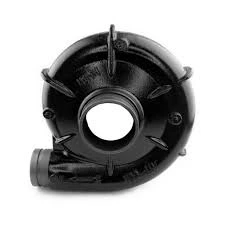Mobile:+86-311-808-126-83
Email:info@ydcastings.com
English
turbo turbine housing
The Importance of Turbocharger Turbine Housing in Modern Engines
In the realm of automotive engineering, turbochargers have emerged as a pivotal technology in enhancing engine efficiency and performance. At the heart of this innovation lies the turbocharger turbine housing, a crucial component that plays a significant role in the operation of turbocharged engines.
Turbocharger turbine housings are designed to channel exhaust gas from the engine to the turbine wheel, which is a fundamental part of the turbocharger. The design and material of the turbine housing directly influence the turbocharger's efficiency and response time. Typically made from cast iron or steel, these housings must withstand extreme temperatures and pressures, as they are located in the exhaust stream where heat and corrosive gases can cause wear and degradation.
The Importance of Turbocharger Turbine Housing in Modern Engines
The design of the turbine housing is paramount. It influences key performance metrics such as boost lag and overall turbo response. Modern turbocharger designs often feature variable geometry turbine (VGT) housings that can adjust the aspect ratio of the turbine entry to optimize performance across a range of engine speeds. This adaptability helps minimize turbo lag, providing a more responsive driving experience, particularly in high-performance and racing applications.
turbo turbine housing

Another critical aspect of turbine housing design is its impact on exhaust back pressure. A well-designed housing should minimize back pressure to enhance engine efficiency, allowing for improved exhaust flow. If the back pressure is too high, it can lead to decreased engine performance and increased stress on the engine components, leading to premature wear or even failure.
In recent years, advancements in materials technology have also contributed to improving the performance of turbocharger turbine housings. The use of high-strength alloys and advanced casting techniques has allowed for lighter, more durable housings that can better withstand the rigorous demands of modern engines. Additionally, thermal barrier coatings are becoming more common, helping to insulate the housing from excessive heat and further enhancing durability.
The role of the turbocharger turbine housing is also evolving with the automotive industry’s shift towards electrification. As hybrid and electric vehicles gain traction, the need for efficient turbocharging solutions remains relevant. Turbochargers can still play a role in boosting efficiency in internal combustion engines while contributing to the performance of hybrid systems, where rapid power delivery is essential.
In summary, the turbocharger turbine housing is a key player in the quest for increased engine performance and efficiency. Its design and materials are critical factors that influence the overall operation of the turbocharger, affecting everything from response times to exhaust flow. As automotive technology advances, the importance of finely-tuned turbine housings will only grow, ensuring that turbocharging remains a vital component of modern engine design. The future of automotive performance hinges on such innovations, promising a thrilling driving experience while promoting sustainability through improved fuel efficiency.
-
Materials Used in Manufacturing Cap End Pipe FittingsNewsNov.24,2025
-
Material Properties of CF8M CastingNewsNov.24,2025
-
How to Inspect Pump Cap Ends for DamageNewsNov.21,2025
-
Backward Curved Impeller – Efficient Airflow Solutions for Industry | YD CastingsNewsNov.21,2025
-
Automobile Water Pump - Efficient, Quiet, Durable & ElectricNewsNov.21,2025
-
Impeller for Pumps – High-Efficiency, Durable, OEM-ReadyNewsNov.21,2025











